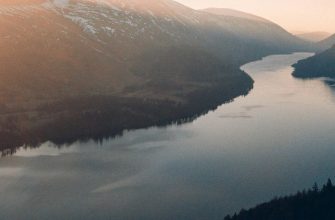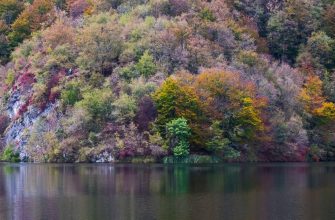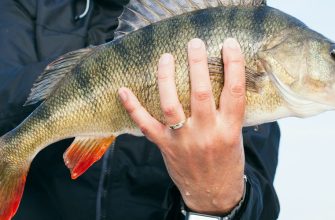- Trout Species:
- Lake Trout (Salvelinus namaycush)
- Rainbow Trout
- Brook Trout and Splake
- Brown Trout
- Lake Trout Species Profile
- Characteristics and Behavior
- Habitat and Distribution
- Lake Trout Spawning
- Differences between Lake Trout and Other Trout Species
- Locating Lake Trout Hotspots
- Identifying prime lake trout habitats in freshwater bodies
- Understanding lake structures and features that attract lake trout
- Using technology and equipment to locate lake trout schools
- Tips for exploring new fishing spots and adapting to changing conditions
- Top Spots for Lake Trout Fishing in the US and Canada
- Top Spots in USA
- Great Lakes
- Flaming Gorge, Utah
- Kenai Peninsula, Alaska
- Top Spots in Canada
- Great Bear Lake, Northwest Territories
- Wollaston Lake, Saskatchewan
- When to Fish Lake Trout
- Spring and Fall
- Winter
- Summer
- Additional Tips
- How to Catch Lake Trout: Proven Techniques and Tactics
- Trolling Techniques for Lake Trout Fishing
- Casting and Retrieving Methods for Lures and Bait
- Drift Fishing Strategies for Catching Lake Trout
- Tips for Fishing in Different Depths and Water Temperatures
- How to Ice Fish for Lake Trout
- Understanding Lake Trout Behavior
- Essential Gear for Ice Fishing
- Techniques for Ice Fishing Lake Trout
- Safety Precautions
- Freshwater Fly Fishing for Lake Trout
- Fly Fishing Tips and Techniques
- Fly Fishing Lures and Baits
- The Best Baits and Lures For Lake Trout
- Overview of Different Lure Types for Lake Trout Fishing
- Best Lure Colors and Sizes for Different Fishing Conditions
- Effective Bait Options for Attracting Lake Trout
- Tips for Using Lures and Bait to Target Lake Trout in Specific Locations or Seasons
- Essential Equipment for Lake Trout Fishing
- Fishing Rods and Reels Suitable for Lake Trout Fishing
- Types of Fishing Lines and Their Recommended Strengths
- Selection of Fishing Hooks and Weights for Lake Trout Fishing
- Essential Tackle and Gear for a Successful Lake Trout Fishing Trip
- Lake Trout Fishing Regulations and Conservation in USA and Canada
- Overview of Fishing Regulations and Licenses for Lake Trout Fishing
- Importance of Practicing Ethical Fishing and Conservation Measures
- Organizations and Resources for Lake Trout Conservation and Research
- FAQs
- Q: What is lake trout fishing?
- Q: What are some popular lake trout fishing locations?
- Q: What are the best lake trout lures?
- Q: How big can lake trout get?
- Q: Where do lake trout typically feed?
- Q: What do lake trout like in terms of habitat?
- Q: What are some tips for catching lake trout?
- Q: Can lake trout be found in Yellowstone Lake?
- Q: Are lake trout part of the salmon family?
- Q: What is the size range of lake trout?
- Q: Are there any regulations for lake trout fishing?
Are you ready to dive into the world of lake trout fishing? Whether you’re a seasoned angler or just starting out, this article is your ultimate guide to mastering the art of catching lake trout using lures and bait. We’ll explore the definition and description of lake trout, discuss the importance and popularity of lake trout fishing, and provide you with valuable tips and tactics to enhance your fishing success.
Lake trout, also known as lakers, are a prized freshwater species that can be found in various parts of North America. They are closely related to whitefish and belong to the salmonid family. Lake trout inhabit cold, deep-water lakes and are known for their impressive size and fighting spirit. Catching a laker is an exhilarating experience that every angler aspires to.

Lake trout fishing has gained immense popularity among anglers for several reasons. First and foremost, lake trout offer a thrilling challenge due to their powerful strikes and acrobatic fights. Additionally, the sheer size of these fish is enough to attract any angler seeking a trophy catch. The opportunity to reel in a laker weighing over 30 pounds is a dream come true for many fishing enthusiasts.
Moreover, lake trout don’t just provide an exciting angling experience; they also offer a delicious reward. Known for their firm, flavorful flesh, lake trout are highly sought after for their culinary value. Whether you enjoy cooking your catch or simply appreciate the satisfaction of a successful fishing trip, lake trout fishing is an activity that combines sport and sustenance.
In this comprehensive guide, we will delve into the world of lake trout fishing and equip you with the knowledge and techniques needed to catch these elusive creatures. We’ll explore the best lures and baits to entice lake trout, discuss the ideal fishing locations, and provide valuable insights into the behavior and habits of these magnificent fish. Whether you’re an experienced angler looking to refine your skills or a novice seeking guidance, this article has something for everyone.
Trout Species:

Lake Trout (Salvelinus namaycush)
Lake trout, also known as lakers, are a popular species of trout found in the lakes of North America. They have a deep, elongated body with a deeply forked tail, which helps them swim swiftly through the water. Lake trout are known for their beautiful coloration, ranging from dark green to gray on their backs and sides, with pale spots scattered across their bodies.
Lake trout are highly sought after by anglers due to their impressive size and strength. These fish can grow to be quite large, with some individuals reaching weights of over 40 pounds. They are known for their aggressive nature, making them a thrilling catch for anglers.
Rainbow Trout
Rainbow trout are another popular trout species found in the USA and Canada. They are known for their vibrant colors, with a distinct pink or red stripe running along their sides. Rainbow trout are native to the Pacific Coast, but they have been introduced to various lakes and rivers throughout North America.
These fish are known for their acrobatic jumps and strong fighting spirit when hooked. They are prized by anglers for their delicious flesh and challenging nature. Rainbow trout can range in size from a few inches to several pounds, providing opportunities for anglers of all skill levels.
Brook Trout and Splake
Brook trout, also known as speckled trout, are a native species to eastern North America. They are small to medium-sized fish with a dark green or brownish coloration and vibrant red spots on their sides. Brook trout inhabit cold, clear streams and lakes, making them a favorite target for fly fishermen.
Splakes, on the other hand, are a hybrid species resulting from the crossbreeding of brook trout and lake trout. They exhibit characteristics of both parent species, with a mix of colors and patterns. Splakes are often stocked in lakes and reservoirs to provide additional angling opportunities.
Brown Trout
Brown trout are an introduced species in North America, originally native to Europe. They are known for their adaptability and ability to thrive in a variety of freshwater environments. Brown trout have a distinctive appearance, with a mottled brown coloration and red or orange spots on their sides.
These fish are highly regarded by anglers for their challenging nature and large size. Brown trout can grow to be quite large, with some individuals exceeding 20 pounds. They are known to be elusive and cautious, requiring anglers to employ stealth and skill to successfully catch them.
Lake Trout Species Profile

Characteristics and Behavior
Lake trout, scientifically known as Salvelinus namaycush, are a species of trout that are highly sought after by anglers in America. These fish exhibit unique characteristics and behaviors that make them a fascinating species to study and target for fishing.
Lake trout are known for their large size and can grow to impressive lengths, often exceeding 3 feet and weighing over 30 pounds. They have a streamlined body shape, which allows them to swim swiftly through the water. Their coloration can vary depending on their habitat, but they generally have dark greenish-gray or brown backs with lighter sides and bellies.
One of the most interesting behaviors of lake trout is their preference for cold water. They thrive in deep, clear lakes with cold temperatures, often found in the northern regions of the United States. These fish are known to inhabit the deeper parts of the lake, where the water is colder and oxygen levels are higher.
Habitat and Distribution
Lake trout are native to North America and have a wide distribution across the continent. They are found in various states, including Alaska, Montana, Michigan, Minnesota, and Maine, among others. These fish prefer large, deep lakes with rocky or gravel bottoms, where they can find suitable spawning grounds and ample food sources.
In Alaska, lake trout can be found in lakes such as Lake Iliamna and Lake Clark. These pristine lakes offer an ideal habitat for lake trout, with their cold, clear waters and abundant food sources.
In the lower 48 states, the Great Lakes are renowned for their lake trout populations. Lakes Superior, Michigan, Huron, and Ontario provide excellent habitats for these fish, with their deep, cold waters and ample forage.
Lake Trout Spawning
Lake trout spawn in the fall, usually between September and November. During this time, they migrate to shallow areas near the shorelines or in tributary streams. The female lake trout excavates a redd (nest) in the gravel or rocky substrate, where she deposits her eggs. The male then fertilizes the eggs, and both parents guard the redd until the eggs hatch.
After hatching, the young lake trout, called fry, remain in the spawning grounds for a short period before venturing into deeper waters. They feed on small invertebrates and gradually transition to a diet of fish as they grow larger.
Differences between Lake Trout and Other Trout Species
Lake trout can be distinguished from other trout species, such as brook trout, rainbow trout, and brown trout, by several characteristics. While all trout species share similarities, there are distinct differences that set lake trout apart.
One key difference is their size. Lake trout are generally larger and have the potential to reach much larger sizes compared to other trout species. They also have a more elongated and streamlined body shape, which aids in their ability to swim swiftly through the water.
Another noticeable difference is their preferred habitat. Lake trout are typically found in deep, cold lakes, while brook trout are commonly found in small, cool streams, rainbow trout thrive in rivers and lakes with swift currents, and brown trout are often found in slower-moving rivers and lakes.
In terms of coloration, lake trout tend to have a darker and more uniform color compared to the vibrant and speckled patterns of brook trout and rainbow trout. Brown trout, on the other hand, have a distinct mottled or spotted appearance.
While lake trout, brook trout, rainbow trout, and brown trout are all members of the trout family, each species has its own unique characteristics and adaptations that make them fascinating subjects for anglers and researchers alike.
Locating Lake Trout Hotspots
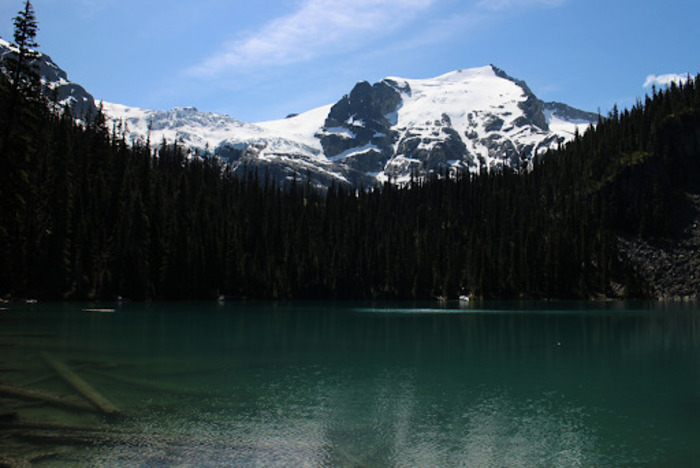
Identifying prime lake trout habitats in freshwater bodies
When it comes to targeting lake trout, understanding their preferred habitats is crucial. Lake trout are commonly found in deep, cold freshwater bodies, such as lakes and reservoirs. These fish thrive in clear, oxygen-rich waters, making them a popular target for anglers seeking a freshwater challenge.
To locate prime lake trout habitats, pay attention to the following factors:
- Water Depth: Lake trout tend to inhabit deeper areas of the lake. Look for drop-offs, underwater ledges, and steep slopes where the water depth changes significantly.
- Water Temperature: Lake trout prefer cooler waters, especially during the warmer months. Use a fish finder or temperature gauge to identify thermoclines, which are areas where the water temperature drops rapidly with depth.
- Underwater Structures: Lake trout are often found near underwater structures such as reefs, submerged islands, and rocky shorelines. These structures provide cover and attract baitfish, which in turn, attract lake trout.
Understanding lake structures and features that attract lake trout
To maximize your chances of locating lake trout, it’s essential to understand the lake structures and features that attract them. Here are some key elements to consider:
- Submerged Points and Humps: Lake trout are known to congregate around underwater points and humps. These areas create natural feeding zones and act as navigation markers for the fish.
- Drop-offs and Channels: Lake trout often patrol the edges of drop-offs and channels, waiting for passing prey. These areas provide easy access to deep water and are prime locations to target.
- Inflow and Outflow Areas: Lake trout are attracted to inflow and outflow areas, such as river mouths and underwater springs. These spots provide a constant supply of fresh oxygen and nutrients, making them productive areas for fishing.
Read more: West Point Lake Fishing – Spots, Tips, License – New York
Using technology and equipment to locate lake trout schools
Modern technology and equipment can greatly enhance your ability to locate lake trout schools. Consider using the following tools:
- Fish Finders: Invest in a quality fish finder with advanced sonar capabilities. This will help you identify underwater structures, thermoclines, and schools of fish, including lake trout.
- GPS Navigation: Utilize GPS navigation to mark productive fishing spots, track your routes, and ensure you cover a variety of areas during your fishing trips.
- Downriggers and Planer Boards: Downriggers and planer boards allow you to fish at specific depths and cover a larger area. Experiment with different depths until you find the depth at which lake trout are actively feeding.
Tips for exploring new fishing spots and adapting to changing conditions
Exploring new fishing spots and adapting to changing conditions is essential for consistent success in lake trout fishing. Here are some tips to consider:
- Research and Local Knowledge: Study maps, online resources, and local fishing reports to identify promising fishing spots. Local anglers and fishing guides can provide valuable insights and tips specific to the area you plan to fish.
- Experiment with Lures and Baits: Lake trout can be selective feeders, so it’s important to have a variety of lures and baits in your tackle box. Experiment with different colors, sizes, and presentations to entice lake trout into striking.
- Stay Mobile: Lake trout can be highly mobile, especially during different seasons and weather conditions. If you’re not finding success in one area, be willing to move around and explore different parts of the lake.
- Stay Informed: Stay updated on fishing regulations, seasonal patterns, and any changes in the lake’s ecosystem. This will help you make informed decisions and adapt your fishing strategies accordingly.
Top Spots for Lake Trout Fishing in the US and Canada
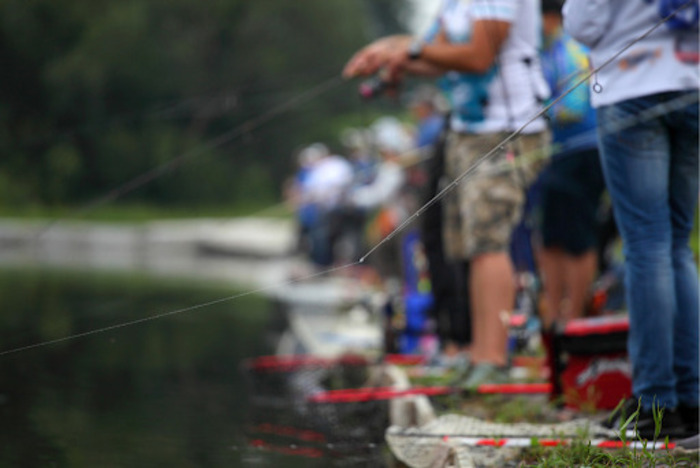
Top Spots in USA
When it comes to lake trout fishing, the USA offers some incredible destinations. Let’s explore a few of the top spots:
Great Lakes
The Great Lakes region is renowned for its lake trout fishing opportunities. Lake Superior, the largest of the Great Lakes, is home to a thriving lake trout population. Anglers flock to its deep, cold waters in pursuit of these prized fish. Lake Erie, another Great Lake, also offers excellent lake trout fishing.
Flaming Gorge, Utah
Flaming Gorge Reservoir in Utah is a fantastic spot for lake trout fishing. Its crystal-clear waters and abundant fish population make it a favorite among anglers. The reservoir is nestled within a picturesque canyon, providing a scenic backdrop for your fishing adventure.
Kenai Peninsula, Alaska
The Kenai Peninsula in Alaska is a paradise for lake trout fishing enthusiasts. The peninsula boasts numerous lakes and rivers teeming with lake trout. The breathtaking scenery, including snow-capped mountains and pristine wilderness, adds to the allure of fishing in this region.
Top Spots in Canada
When it comes to lake trout fishing, Canada offers some unparalleled locations. Here are a couple of must-visit spots:
Great Bear Lake, Northwest Territories
Great Bear Lake in the Northwest Territories of Canada is renowned for its trophy-sized lake trout. Anglers from around the world come to this remote and pristine lake for the opportunity to catch massive lake trout. The crystal-clear waters of Great Bear Lake provide the perfect setting for an unforgettable fishing experience.
Wollaston Lake, Saskatchewan
Wollaston Lake in Saskatchewan is another top destination for lake trout fishing. This vast lake is known for its robust lake trout population, with fish reaching impressive sizes. The serene beauty of the surrounding boreal forest adds to the allure of fishing in this remote Canadian wilderness.
When to Fish Lake Trout

Spring and Fall
Spring and fall are widely regarded as the prime seasons for lake trout fishing. During these transitional periods, lake trout are actively feeding and more willing to bite. As the water temperature begins to warm up in the spring, lake trout move closer to the shallows in search of food. This makes them more accessible to anglers. Similarly, in the fall, lake trout start moving towards the shallows again as the water cools down, preparing for the winter.
Winter
Winter can be a challenging but rewarding time to fish for lake trout. As the water temperature drops, lake trout become more sluggish, making them less active and harder to catch. However, with the right techniques and equipment, winter fishing can yield impressive results. Ice fishing is particularly popular during this time, as anglers drill holes in the ice and drop their lines to target lake trout hunkering near the bottom.
Summer
While lake trout fishing tends to slow down during the summer months, it is still possible to have success if you know where to find them. During hot summer days, lake trout seek refuge in the deeper, cooler parts of the lake. Targeting these deeper areas, such as underwater structures or thermoclines, can increase your chances of hooking a lake trout. Early mornings and late evenings are often the best times to fish during the summer, as lake trout may be more active during these cooler periods.
Additional Tips
When planning your lake trout fishing trip, it’s important to consider factors such as weather conditions, water temperature, and local regulations. Additionally, using the right lures and baits can significantly improve your chances of enticing lake trout to bite. Commonly used lures for lake trout include spoons, jigs, and swimbaits. Experimenting with different colors and sizes can help you determine what works best in your specific fishing location.
How to Catch Lake Trout: Proven Techniques and Tactics
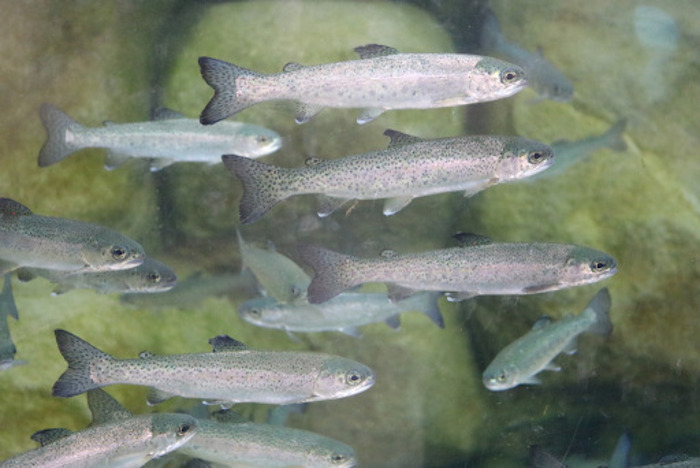
Trolling Techniques for Lake Trout Fishing
When it comes to targeting lake trout, trolling is a popular and effective technique. By using this method, anglers can cover a large area of water and increase their chances of hooking into a trophy-sized fish. Here are some key tips for trolling:
- Selecting the Right Lures: Choose lures that imitate the lake trout’s natural prey, such as minnows or cisco. Jigs, spoons, and crankbaits can be excellent choices. Experiment with different colors and sizes to see what the fish responds to.
- Downriggers: Downriggers are essential tools for trolling at specific depths. Attach your lure to the downrigger line, adjust the depth, and let out the line until you reach your desired location. This allows you to target lake trout at different depths, depending on where they’re feeding.
- Varying Speed and Depth: Lake trout can be found at various depths, depending on factors like water temperature and the presence of baitfish. Experiment with different trolling speeds and depths to find the right combination that triggers strikes from these elusive fish.
Casting and Retrieving Methods for Lures and Bait
Casting and retrieving is another effective technique for catching lake trout, especially in shallower waters or when targeting fish near submerged structures. Here’s what you need to know:
- Using Jigs: Jigs are versatile lures that can be cast and retrieved effectively for lake trout. Choose a jig head that matches the weight needed to reach the desired depth. Pair it with a soft plastic or live bait, such as nightcrawlers, to entice strikes.
- Retrieving Lures: When retrieving your lure, vary your speed and action. Lake trout are known to be aggressive predators, so using an erratic retrieve can entice them to strike. Experiment with different speeds, pauses, and jerks to find the retrieve that triggers the most strikes.
Drift Fishing Strategies for Catching Lake Trout
Drift fishing is an excellent technique when you want to cover a large area and present your bait naturally to lake trout. Follow these tips to maximize your success:
- Using Live Bait: Lake trout are known to be fond of live bait, such as minnows or nightcrawlers. Hook your live bait onto a harness rig or a jig head and allow it to drift naturally with the current. This technique can be particularly effective when fishing near drop-offs or underwater structures.
- Monitoring Your Drift: Pay attention to the speed and direction of your drift. Use a drift sock or a sea anchor to control your boat’s speed and keep it in the strike zone longer. Being able to present your bait effectively during the drift can increase your chances of enticing lake trout to bite.
Tips for Fishing in Different Depths and Water Temperatures
Understanding the behavior of lake trout in relation to water depth and temperature is crucial for successful fishing. Consider these tips when targeting lake trout in various conditions:
- Spring and Fall: During these seasons, lake trout can be found in shallower waters, especially near shorelines or drop-offs. Focus on fishing in depths ranging from 10 to 40 feet for the best results.
- Summer: As water temperatures rise, lake trout tend to move to deeper, cooler waters. Target depths of 40 to 80 feet or more, depending on the specific lake and its thermocline. Downriggers and deep-diving lures can be effective tools for reaching these depths.
- Ice Fishing: When the lakes freeze over, ice fishing for lake trout can be an exciting endeavor. Use specialized ice fishing lures, such as spoons or jigs tipped with bait, to entice strikes. Set up your ice fishing shelter near a drop-off or a known lake trout hotspot for the best chances of success.
How to Ice Fish for Lake Trout
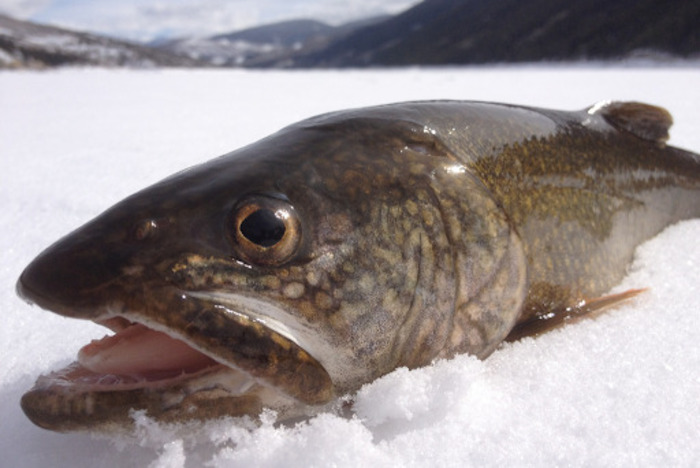
Understanding Lake Trout Behavior
Before heading out onto the ice, it is important to understand the behavior of lake trout. Lake trout are known to inhabit deep, cold waters, preferring temperatures between 45 and 55 degrees Fahrenheit. They are often found in large bodies of water, such as lakes and reservoirs, where they can feed on a variety of prey.
Essential Gear for Ice Fishing
To start your ice fishing adventure, you will need the following gear:
- Ice auger: Use an ice auger to drill a hole in the ice. Make sure the hole is wide enough to accommodate your fishing equipment.
- Ice fishing rod and reel: Opt for a medium to heavy action rod and a sturdy reel capable of handling the weight of lake trout.
- Tip-ups or ice fishing traps: These devices allow you to fish multiple holes simultaneously. Attach a baited hook to the line and set the trap over the hole.
- Bait: Lake trout are known to be attracted to live bait, such as minnows or smelt. Make sure to check the local regulations regarding bait usage.
- Depth finder: A depth finder can help you locate the depth at which lake trout are swimming. This will increase your chances of a successful catch.
Techniques for Ice Fishing Lake Trout
Here are some effective techniques to improve your chances of catching lake trout:
- Find the right location: Lake trout prefer colder waters, so look for areas with deep depths and underwater structures, such as drop-offs, points, or reefs.
- Set up your equipment: Once you have selected a promising location, drill your holes and set up your tip-ups or ice fishing traps. Place them at varying depths to cover different areas of the water column.
- Patience is key: Lake trout can be elusive, so be prepared to wait patiently for a bite. It is recommended to give each hole at least 15 minutes before moving on to the next one.
- Jigging technique: If you prefer an active approach, try jigging. Drop your baited hook to the desired depth and use an up-and-down motion to attract the attention of lake trout.
Safety Precautions
While ice fishing can be a rewarding experience, it is important to prioritize safety. Here are some safety precautions to keep in mind:
- Always check the ice thickness before venturing out. A minimum of 4 inches of clear, solid ice is generally considered safe for walking.
- Wear appropriate clothing to stay warm and dry. Layering is key, as it allows you to adjust your clothing based on the weather conditions.
- Bring safety equipment, such as ice picks or a throw rope, in case of an emergency.
- Fish with a buddy. Having someone else with you adds an extra layer of safety.
Freshwater Fly Fishing for Lake Trout
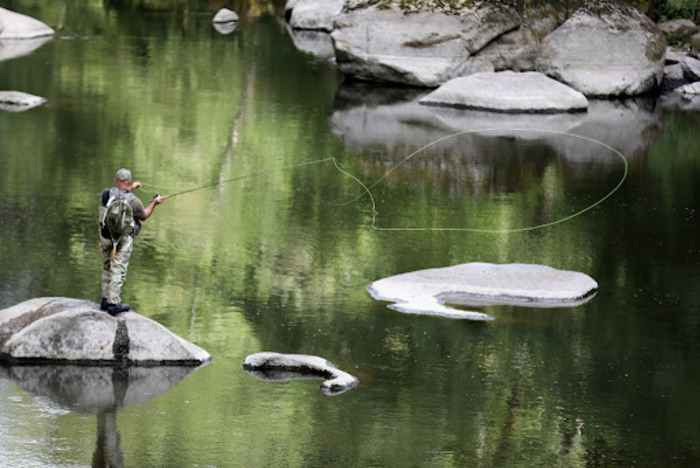
Lake trout are a species of freshwater game fish that thrive in coldwater environments. They are known for their impressive size and strength, making them an exciting challenge for fly fishing enthusiasts. These fish have a streamlined body and are often found in deep, clear lakes with rocky bottoms.
Fly Fishing Tips and Techniques
Fly fishing for lake trout is a fascinating and exhilarating pursuit that requires anglers to employ specific techniques tailored to the behavior and preferences of these elusive fish.
To ensure success when fly fishing for lake trout, it is crucial to select the most effective lures and baits. Anglers have a wide range of choices, including spoons, spinners, and soft plastic baits.
The key is to opt for lures and baits that closely resemble the natural prey of lake trout, such as small fish or insects. By presenting these enticing offerings, anglers can entice lake trout to strike and secure a memorable catch.
To successfully lure lake trout, anglers often turn to the use of streamer flies, meticulously crafted to mimic the appearance and movement of small fish or other prey that lake trout commonly feed on.
By skillfully casting these lifelike flies near drop-offs, submerged structures, or underwater ledges, anglers can greatly increase their prospects of attracting these magnificent fish.
Timing is also crucial when targeting lake trout. These fish are often more active during the early morning or late evening hours, making these periods ideal for fishing. By planning fishing trips accordingly, anglers can maximize their opportunities to encounter and hook these prized fish.
Understanding the depth preferences of lake trout is another essential consideration. These fish tend to reside in deeper parts of lakes, especially during the warmer months. Using a depth finder or consulting local fishing resources can help determine the optimal depths for targeting lake trout.
Weather conditions can also influence lake trout behavior, so paying attention to atmospheric conditions is key. Overcast days or periods of low light can be particularly productive for fishing, as lake trout may be more active during these times. By adapting their fishing strategies to suit prevailing weather patterns, anglers can increase their chances of a successful outing.
Before embarking on a fly fishing adventure for lake trout, it is crucial to familiarize oneself with local fishing regulations and obtain any necessary permits. Practicing catch-and-release is not only a responsible approach but also ensures the preservation of the lake trout population for future generations of anglers to enjoy.
Fly Fishing Lures and Baits
When it comes to fly fishing for lake trout, selecting the right lures and baits is crucial. Anglers have a variety of options to choose from, including spoons, spinners, and soft plastic baits. The key is to choose lures and baits that closely resemble the natural prey of lake trout, such as small fish or insects.
Spoons are a popular choice for targeting lake trout. These metal lures have a curved shape that mimics the movement of injured baitfish. Anglers can cast spoons and retrieve them with a steady, rhythmic motion to attract the attention of lake trout.
Spinners are another effective option for enticing lake trout. These lures consist of a spinning blade and a colorful body, which creates flash and vibration in the water. By varying the retrieval speed and depth, anglers can imitate the erratic movement of fleeing baitfish and trigger strikes from lake trout.
Soft plastic baits are versatile and can be rigged in various ways to imitate different types of prey. Anglers can use soft plastic swimbaits, grubs, or worms to mimic small fish or insects that lake trout feed on. These baits can be rigged on a jighead or used on a weighted hook to achieve the desired depth.
When choosing lures and baits, it’s essential to consider the water conditions and the preferences of the lake trout. Pay attention to the size, color, and action of the lures, as these factors can make a significant difference in attracting lake trout.
Experimenting with different lures and baits is key to finding what works best in specific fishing situations. By observing the behavior of lake trout and adjusting your tactics accordingly, you can increase your chances of success in fly fishing for these thrilling game fish.
Remember to check local fishing regulations and obtain any necessary permits before heading out. Practice catch-and-release to preserve the lake trout population and ensure their sustainability for future generations of anglers.
The Best Baits and Lures For Lake Trout

Overview of Different Lure Types for Lake Trout Fishing
When it comes to lake trout fishing, there are several popular lure types that have proven to be effective:
- Spoons: Spoons are known for their wobbling action that mimics the movement of injured baitfish. Lake trout are often attracted to this action and will strike at the spoon. When choosing a spoon lure, opt for sizes and colors that resemble the baitfish in the lake you’re fishing.
- Minnow Imitating Lures: These lures are designed to resemble the primary food source for lake trout, which is minnows. They can be either hard or soft-bodied and come in various sizes and colors. Consider using minnow-imitating lures that match the size and color of the baitfish in the lake.
- Jigs: Jigs are versatile lures that can be used effectively for lake trout fishing. They consist of a weighted head and a hook, often adorned with a soft plastic or feather tail. Jigs can be bounced along the bottom or retrieved in a jigging motion to entice lake trout.
- Plugs: Plugs are hard-bodied lures with diving lips that allow them to dive to specific depths. They often mimic the appearance and movement of injured baitfish. Choose plugs that can reach the desired depth where lake trout are located.
When selecting a lure for lake trout fishing, it’s important to consider the size, color, and action of the lure. Match the size of the lure to the baitfish in the lake and choose colors that imitate the natural prey of lake trout. Experiment with different retrieval speeds and techniques to find what works best for the specific location and conditions.
Remember, lake trout behavior can vary, so it’s crucial to do research and adapt your lure selection and techniques accordingly. Good luck and happy fishing!
Best Lure Colors and Sizes for Different Fishing Conditions
The color and size of the lure can greatly impact your success in catching lake trout, especially under different fishing conditions. In clear water, lighter and more natural colors tend to work well. Silver, white, and chrome-colored lures can effectively mimic the appearance of baitfish. On the other hand, in murky or stained water, using bright and vibrant colors such as chartreuse or orange can help attract the attention of lake trout.
When it comes to lure size, it’s essential to match the size of the baitfish that lake trout typically feed on. Smaller lures, around 2 to 3 inches in length, are suitable for imitating young baitfish. As the lake trout grows larger, you can increase the lure size accordingly to entice them.
Effective Bait Options for Attracting Lake Trout
While lures are commonly used for lake trout fishing, bait can also be a successful option. One popular choice is using live bait such as nightcrawlers. These worms are readily available and can be presented on a hook with a split shot weight for depth control. Another effective bait option is cisco, a type of fish that lake trout naturally prey upon. Using cisco as bait can be highly enticing to lake trout.
Tips for Using Lures and Bait to Target Lake Trout in Specific Locations or Seasons
To maximize your chances of catching lake trout, it’s crucial to consider the specific location and season. In deeper waters, where lake trout often reside, using lures that can reach the desired depth is essential. Downriggers and lead-core lines can help you achieve the necessary depth for successful fishing.
During the colder months, when lake trout tend to be closer to the surface, using shallower-running lures can be more effective. Additionally, varying your retrieval speed and incorporating pauses in your retrieve can mimic the erratic movements of injured baitfish, enticing lake trout to strike.
Remember, lake trout behavior can vary from one body of water to another, so it’s essential to research and understand the specific lake you plan to fish.
By utilizing a combination of lures and bait, adapting to different fishing conditions, and understanding the behavior of lake trout, you can enhance your chances of a successful fishing trip.
Essential Equipment for Lake Trout Fishing
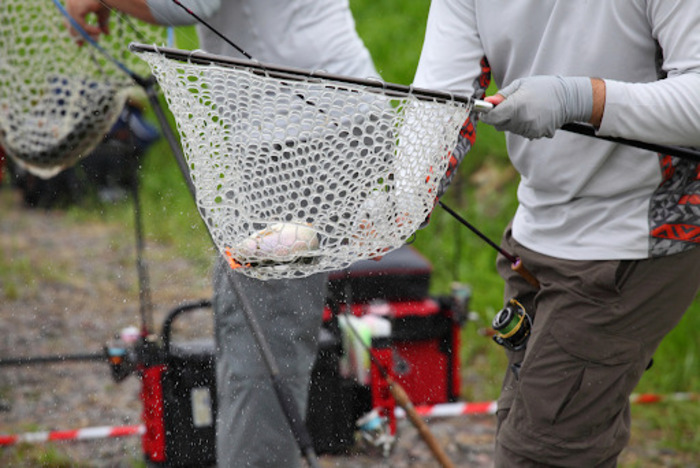
Fishing Rods and Reels Suitable for Lake Trout Fishing
When it comes to lake trout fishing, having the right fishing rod and reel combination is crucial. You’ll want a rod that is strong enough to handle the fight of a lake trout, yet sensitive enough to detect subtle strikes. A medium to medium-heavy spinning rod is a popular choice among anglers. Pair it with a high-quality spinning reel that has a smooth drag system. This setup will provide the strength and control needed to reel in those big lake trout.
Read more: Best Bass Fishing Lakes in Texas – Local Tips and Lakes
Types of Fishing Lines and Their Recommended Strengths
Choosing the right fishing line for lake trout fishing is essential. Monofilament and braided lines are commonly used for this type of fishing. Monofilament lines offer good strength and are more forgiving, while braided lines provide excellent sensitivity and durability. As for the line strength, opt for an 8 to 12-pound test when targeting lake trout. This will give you the necessary strength to handle these powerful fish while still maintaining good sensitivity.
Selection of Fishing Hooks and Weights for Lake Trout Fishing
When it comes to hooks and weights for lake trout fishing, it’s important to match the size of the hook and weight to the size of the bait and depth you’ll be fishing. For lake trout, treble hooks in sizes 4 to 10 are commonly used. These hooks offer good hook-setting capabilities and can accommodate various bait sizes. As for weights, consider using inline sinkers or split-shot sinkers. Start with lighter weights and adjust accordingly based on the depth and current conditions.
Essential Tackle and Gear for a Successful Lake Trout Fishing Trip
Aside from the basic fishing equipment, there are some essential tackle and gear items that can greatly improve your chances of success when targeting lake trout. Here are a few recommendations:
- Lures: Lake trout are known to be attracted to various lures, including spoons, jigs, and swimbaits. Experiment with different colors and sizes to find what works best in your fishing location.
- Fishfinder: A fishfinder can be a valuable tool for locating lake trout. It helps you identify underwater structures and schools of fish, increasing your chances of finding productive fishing spots.
- Landing Net: Lake trout can grow to impressive sizes, so having a sturdy landing net is essential for safely landing and releasing these fish.
- Tackle Box: Keep your tackle organized and easily accessible with a well-stocked tackle box. Include a variety of hooks, weights, extra fishing lines, and other essential tackle items.
Lake Trout Fishing Regulations and Conservation in USA and Canada

Overview of Fishing Regulations and Licenses for Lake Trout Fishing
When it comes to lake trout fishing in the USA and Canada, it is essential to understand the fishing regulations and obtain the necessary licenses. Each state and province may have its specific rules and requirements, so it’s crucial to familiarize yourself with the local regulations before heading out to the waters.
In the United States, the Department of Fish and Wildlife manages and enforces fishing regulations to ensure the sustainability of fish populations. These regulations often include restrictions on bag limits, size limits, and fishing seasons. Before you embark on your lake trout fishing adventure, make sure to check the specific regulations for the state you plan to fish in. This will help you stay compliant and contribute to the conservation efforts in the region.
Similarly, in Canada, fishing regulations are overseen by provincial authorities such as the Ministry of Natural Resources. Each province may have its fishing license requirements and regulations. It is crucial to obtain the appropriate fishing license for the province you wish to fish in and adhere to the set guidelines. By following these regulations, you can contribute to the preservation of lake trout populations for future generations.
Importance of Practicing Ethical Fishing and Conservation Measures
As lake trout enthusiasts, it is our responsibility to practice ethical fishing and conservation measures to ensure the long-term sustainability of this magnificent species. By following ethical fishing practices, we can minimize our impact on the environment and contribute to the preservation of lake trout populations.
One essential aspect of ethical fishing is catch and release. When catching lake trout, it is crucial to handle them with care and release them back into the water. This practice allows the fish to continue their lifecycle and contribute to the overall health of the population. Additionally, using barbless hooks and proper fishing techniques can reduce harm to the fish and increase their chances of survival after release.
Conservation measures extend beyond individual fishing practices. Numerous organizations and resources are dedicated to lake trout conservation and research. For example, the Department of Fish and Wildlife, Trout Unlimited, and local conservation groups actively work towards preserving lake trout habitats and monitoring their populations. By supporting and getting involved with these organizations, we can contribute to the conservation efforts and ensure the future of lake trout fishing.
Organizations and Resources for Lake Trout Conservation and Research
To further enhance your knowledge and involvement in lake trout conservation, here are some valuable organizations and resources to explore:
- U.S. Fish & Wildlife Service
- Trout Unlimited
- Lake Trout Conservation Society
- The North American Lake Management Society
These organizations offer valuable information, research updates, and opportunities to participate in conservation initiatives. By staying informed and engaged, we can contribute to the preservation of lake trout populations and ensure the sustainability of this cherished species.
Remember, by following fishing regulations, practicing ethical fishing, and supporting conservation organizations, we can enjoy the thrill of lake trout fishing while ensuring its long-term viability for generations to come.
Happy fishing!
Note: The information provided in this article is based on reliable sources and is specific to lake trout fishing in America. Always check local fishing regulations and guidelines before heading out on your fishing trip to ensure compliance and conservation of fish populations.
FAQs
Q: What is lake trout fishing?
A: Lake trout fishing refers to the activity of catching lake trout, which are a type of freshwater fish that inhabit various lake trout waters across North America.
Q: What are some popular lake trout fishing locations?
A: Lake Ontario, Yellowstone Lake, and various lake trout fisheries are popular destinations for lake trout fishing.
Q: What are the best lake trout lures?
A: Bucktail jigs, salmon eggs, and various lures designed to mimic smaller fish are often effective for catching lake trout.
Q: How big can lake trout get?
A: Lake trout are the largest of the char fish species, and they can reach impressive sizes, with some world-record lake trout weighing over 100 pounds.
Q: Where do lake trout typically feed?
A: Young lake trout feed on smaller fish, including trout and brook trout. They can be caught closer to shore and in deeper waters where their prey fish exist.
Q: What do lake trout like in terms of habitat?
A: Lake trout generally prefer coldwater environments and are often found in deep, clear lakes. They are known to inhabit areas close to shore as well.
Q: What are some tips for catching lake trout?
A: Using the right lures, fishing with a fly rod, and targeting areas where lake trout are known to feed can increase your chances of a successful catch.
Q: Can lake trout be found in Yellowstone Lake?
A: Yes, lake trout can be found in Yellowstone Lake, which is home to native lake trout populations.
Q: Are lake trout part of the salmon family?
A: While lake trout and salmon are both coldwater fish, lake trout are not part of the salmon family. They belong to the char family.
Q: What is the size range of lake trout?
A: Lake trout can vary in size, but they are known to grow larger than many other freshwater fish species. Fish weighing over 20 pounds are not uncommon.
Q: Are there any regulations for lake trout fishing?
A: It is important to check local fishing regulations and adhere to catch limits and size restrictions to ensure the sustainability of lake trout fisheries.

